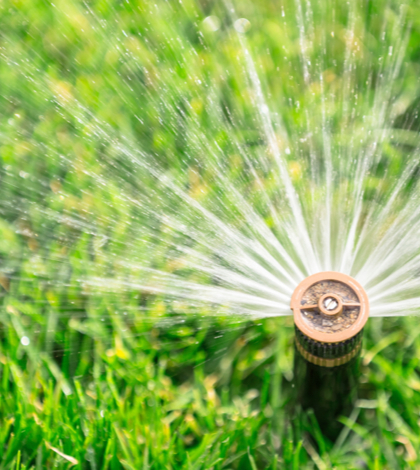An official with the California Building Industry Association says replacing older toilets and other water fixtures is crucial and will go a long way toward saving water, but the job won’t be easy.
Robert Raymer believes he’s identified a way to help California get through the drought, now in its third year and perhaps the worst in the state’s history.
Replace some toilets. A whole lot of them, up and down the state, and as soon as possible.
Raymer, senior engineer and technical director for the California Building Industry Association in Sacramento, also wants to replace faucets and other water fixtures with devices that will save more water. Mostly, though, he’s concerned with toilets, especially those in residential units and commercial buildings that were built before 1980.
Toilets are by far the biggest water wasters in older houses and commercial buildings. A single-family home built during the 1950s or ‘60s might be equipped with toilets that use seven gallons of water per flush, Raymer said.
“Back then there was no such thing as conservation,” Raymer said. “The word didn’t exist, and the idea of saving anything never crossed anyone’s mind. There was plenty of water, so they used seven-gallon toilets, which was ridiculous.”
By comparison, a water-saving toilet today – the kind that is routinely installed in any new residential unit or commercial building in the state – uses as little as 1.2 gallons per flush, and works just fine.
Raymer has not worked out how to replace toilets and water faucets in older homes and commercial buildings in California. He admits it’s a monumental task, and that it will take some kind of government mandate to succeed: asking people to make the changes on their own won’t work.
The Brown Administration, along with the state’s 600-plus water and irrigation districts and other local jurisdictions, will have to come up with incentives, financial or otherwise, to get people to make the changes, he said.
Raymer will speak at the eighth annual San Bernardino County Water Conference, scheduled to be held Aug. 22 at Cal State San Bernardino. The association’s Baldy View chapter is again sponsoring the event, which will focus on the “new normal” of a lower water supply for the state.
Raymer, whose specialty is deciphering the state’s building codes, will discuss good news and bad news. On the good side, three-bedroom homes with four occupants that are built today use 29,000 gallons less water every year than similar homes built as recently as 2005. That means California has some of the most water-efficient homes in the United States.
On the negative side, there are approximately 7.5 million single-family homes in California today, and more than half of them were built before 1980, when just about everyone in the state assumed an endless water supply.
“There are still a lot of houses equipped with old fixtures that use up to three times more water than new homes,” Raymer said. “So we still have a problem with excessive use of water in a lot of houses.”
Raymer will present a 10-page report, “Codes and Standards Consulting: California’s Indoor Residential Water Use,” which was commissioned by the California Homebuilding Association and completed in March. The report was compiled by ConSol, an energy consulting firm in Stockton.
The study looks at water-saving requirements for new houses that went into effect on Jan. 1, 2011, the so-called CalGreen Code, which the state approved in 2010. It called for a mandatory 20 percent cut in water use in all new houses, mostly through water-saving toilets, low-flow shower heads and water faucets. It noted that those changes could be made for minimal cost.
The report concluded that if homes 30 years old and older were required to meet the standards of the CalGreen Code, it would save the state about 300 billion gallons of water every year.
“I think we have some good data and a good handle on the situation,” said Raymer, who called California’s estimated 13.5 million residential units – both single-family and multi-family – a “patchwork quilt” of new and old structures. “But we have to do something, because this is not a regular drought. It’s historic.”
One day after Raymer made those comments, the state legislature voted to put a major water plan before voters this November.
The proposed $7.5 billion measure would be the largest investment in decades in the state’s water infrastructure, setting aside funds for the construction of reservoirs, cleaning contaminated groundwater and implementing water-saving technology.
The measure, which was hammered out during several weeks of contentious negotiations, passed the Senate and Assembly with only two dissenting votes. That prompted Gov. Brown to say he’d never seen both parties so united on a single issue.
No doubt some legislators saw news reports earlier this week regarding the status of Lake Mead, the reservoir behind Hoover Dam that is one of largest sources of fresh water for the southwest United States.
The lake is at 39 percent capacity, its lowest level since the 1930s, when Hoover Dam was built and the lake was first filled in.
It’s currently 1,080 feet above sea level, down almost the width of a football field from its full capacity of 1,225 feet above sea level. Should that level fall to 1,075 feet above sea level, all water deliveries from the lake to Arizona and Nevada will be stopped.
Coming up with a way to replace so many toilets and fixtures is a difficult job, one that will have be undertaken mostly by water districts and other local jurisdictions, said Mike Hodgson, ConSol president.
“The water districts could give out financial incentives, and maybe cities could do something,” Hodgson said. “They have to do something because voluntary doesn’t work. But I think it has to fall on the various water districts, because they’re the one who have the greatest stake in this issue.”
 IE Business Daily Business news for the Inland Empire.
IE Business Daily Business news for the Inland Empire.


